Classroom-based Lotka-Volterra exercise uses real-world mosquito invasion case study to teach difficult concepts.
In the past decade, two species of introduced disease-carrying mosquitoes were detected in the state of California. Both in the genus Aedes, the Asian Tiger Mosquito and the Yellow Fever Mosquito are vectors for Dengue fever, Chikungunya, and Zika virus. Although the diseases themselves are not yet locally transmitted in California, state and local vector-control agencies are working aggressively to stop the mosquitoes’ spread. Despite this effort, mosquito populations continue to grow. Population dynamics are being tracked by the CDC, who provide guidance to local agencies on control measures.
In addition to the two introduced Aedes species, there are also 53 species of mosquitoes native to California. In the eastern United States, researchers have experimentally induced competition between native and introduced Aedes mosquito species. Could it be possible, in California, for vector control agencies to leverage competition between invading Aedes and native mosquito species as a tool to limit the population density of these disease vectors? What do you think?
Teaching Lotka-Volterra
This real-world scenario, based on published research, is the set up for Mosquito Invasion! A Lotka-Volterra Competition Case Study, created by ecologist Dr. Jes Coyle, at St Mary’s College in California. Designed as an in-classroom group activity to complement SimBio’s interactive Competition ecology chapter, Mosquito Invasion! uses a pertinent case study to teach difficult-to-grasp concepts. By starting with a story, case studies cast concepts in the context of relevant events and give students the opportunity for practical application, to turn concepts into problem-solving tools. When learning occurs around a relatable problem, it is more likely that students will retain learned material and be able to apply what they have learned to future situations.
Often, case study information is provided to students in small, logically-ordered increments. This type of instruction is called an Interrupted Case Study. During breaks or “interruptions” between the chunks of information, students are encouraged to examine evidence, ask questions, and make predictions about what will happen next. These instructor-led breaks also allow opportunities for teachers to pose questions, review student answers, and address any misconceptions.
Case studies such as Mosquito Invasion! were the focus of a 2019, SimBio-organized Faculty Mentoring Network (FMN), hosted by the social platform QUBES. This STEM-focused platform provides a format for educators to share activities and resources for the classroom, and also an opportunity to collaborate on the creation and development of new quantitative teaching materials. The SimBio-initiated FMN was organized with the goal of developing classroom activities based upon real-world problems and published research. In total, the SimBio-QUBES FMN produced 18 case studies, many now published on the QUBES website.
Each case study was designed to work as a classroom-based complement to SimBio’s SimUText interactive ecology chapters, which instructors typically assign as homework. SimUText chapters introduce topic material in an interactive and engaging format, allowing students to become familiar with terms and concepts at their own pace. Classroom activities such as Mosquito Invasion!, when delivered as interrupted case studies, can be used as group learning experiences, and give students extra practice with material learned outside the classroom. The format encourages discussion between students, their peers, and their instructors.
SimBio’s Competition Chapter
Mosquito Invasion! builds upon the storyline and concepts presented in SimBio’s Competition chapter. Traditionally, intraspecific competition, Lotka Voltera, and phase planes have been taught to students by using examples illustrated with two-dimensional images and complex equations, entombed within the pages of a static textbook. This format lacks depth and can be confusing to students. In contrast, SimUText chapters are presented in an innovative, fresh format. Dynamic visualizations and inventive simulations are used to teach pertinent concepts, allowing students to gain a deeper perspective on the topic of competition. (To see this in action, check out our Competition demo video below!)
After completing the SimUText Competition chapter, students can tackle Coyle’s interrupted case study. They are presented with data on native and invasive mosquito species, which provides an opportunity for in-classroom additional practice interpreting Lotka-Volterra competition models. Students can modify model parameters based upon real-world actions and alter the competition outcome between the two mosquito species. The case ultimately asks students to make a management decision to stop the spread of invasive, disease-carrying mosquitoes in California, and students must use their knowledge of competitive outcomes to select the best strategy. Interrupted case studies like Mosquito Invasion! provide the perfect complement to reinforce our powerful educational software.
You can download this case study and many others, for free, on the QUBES website.
Explore SimBio’s Competition chapter with our free Evaluation Software






 Using Simulations to Teach Cell Biology
Using Simulations to Teach Cell Biology

